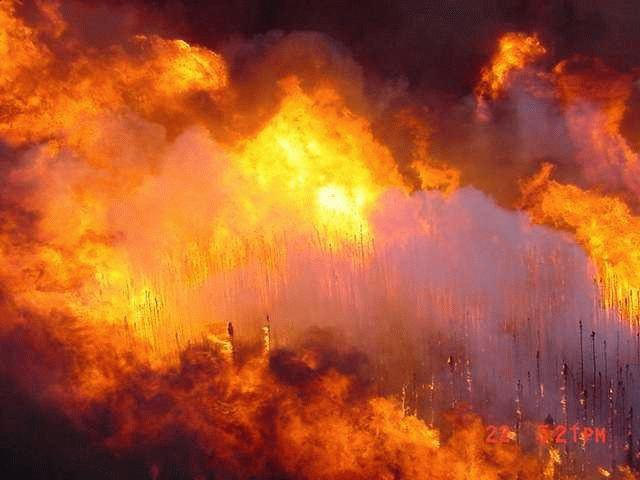
Alberta wildfire
“But we love the trees. We moved to the mountains to live in the forest!” she plaintively opined. Such were the words from a former co-worker of mine living in one of the many foothill towns along the Front Range. I didn’t realize how much she loved the trees until a visit to her house, when I realized that their deck was actually built with a large pine tree in the middle of it. Talk about living in denial….
Another neighbor of mine gruffly says, “If there’s a wildfire that burns down the forest, I don’t want to be living among the ashes. I’d just as soon my house burn down too.” His reasoning is given as a response for not doing wildfire mitigation work around his home. You might be thinking right now, why do I have any right to impose my opinions or judgments on them — they should be allowed to make their own choices.
But the truth is, if you choose to live in the mountains, you are choosing to live in a wildfire zone with very risks that a wildfire could break out any time. I’ve been reminded of this fact recently reading the recent news of a catastrophic wildfire in Alberta, Canada that has already wiped out over 1600 homes and caused the evacuation of the entire town of Ft. McMurray, with 90,000 residents being displaced.
All of us who live in the mountains of Colorado know that during any given year that could be us. It has been us. Just a few weeks after my husband and I moved into our home here in Nederland, a large wildfire broke out that burned down over 160 homes. That brought home the reality of where we were living, and what the risks were. It also spurred us to action.
And though, we personally have taken on the task of doing everything we can to mitigate our property, cutting down over 100 trees, clearing trees and plants from the foundation of our home, the truth is that wildfire mitigation must be a community effort. You can take every step possible yourself, but if your next door neighbor isn’t willing to do the same, the threat remains.
On public radio one day, I listened to an interview with fire management officials who discussed the program, Firewise. In talking about the importance of fire mitigation, he talked about a fire he had fought recently, where they were scouting a neighborhood on pre-evacuation. They toured the neighborhood, assessing each property in terms of defending it from fire. The system they used was similar to a stop light, where they would rate each house — Green Light, Yellow Light. Green light indicated a home considered to have good defensible space. However, there was no red light, but instead, the term “historic” was used. The broadcaster asked why they used the term, “historic”. The firefighter said, because a home with no defensible space wasn’t safe for firefighters to defend, and therefore it was considered history.
Some people make take offense to that, but the risks are great. I believe if we choose to live in the mountains among the glorious firs and pines, we also all have a duty to make it safe for everyone who lives around us as well. Let’s not try to live in denial and pretend otherwise.

